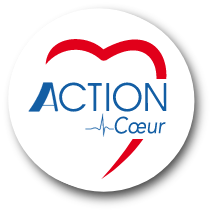Background and aim :
The aim of this landmark exploratory analysis, ATLANTIC-H24, was to evaluate the effects of pre-hospital ticagrelor during the first 24 h after primary percutaneous coronary intervention (PCI) in the ATLANTIC (Administration of Ticagrelor in the cath Lab or in the Ambulance for New ST elevation myocardial infarction to open the Coronary artery) study. The ATLANTIC trial in patients with ongoing ST-segment elevation myocardial infarction showed that pre-hospital ticagrelor was safe but did not improve pre-PCI coronary reperfusion compared with in-hospital ticagrelor. We hypothesized that the effect of pre-hospital ticagrelor may not have manifested until after PCI due to the rapid transfer time (31 min).
Methods :
The ATLANTIC-H24 analysis included 1,629 patients who underwent PCI, evaluating platelet reactivity, Thrombolysis In Myocardial Infarction flow grade 3, ≥70% ST-segment elevation resolution, and clinical endpoints over the first 24 h.
Results :
Following PCI, largest between-group differences in platelet reactivity occurred at 1 to 6 h; coronary reperfusion rates numerically favored pre-hospital ticagrelor, and the degree of ST-segment elevation resolution was significantly greater in the pre-hospital group (median, 75.0% vs. 71.4%; p = 0.049). At 24 h, the composite ischemic endpoint was lower with pre-hospital ticagrelor (10.4% vs. 13.7%; p = 0.039), as were individual endpoints of definite stent thrombosis (p = 0.0078) and myocardial infarction (p = 0.031). All endpoints except death (1.1% vs. 0.2%; p = 0.048) favored pre-hospital ticagrelor, with no differences in bleeding events.
Conclusion :
The effects of pre-hospital ticagrelor became apparent after PCI, with numerical differences in platelet reactivity and immediate post-PCI reperfusion, associated with reductions in ischemic endpoints, over the first 24 h, whereas there was a small excess of mortality. (Administration of Ticagrelor in the cath Lab or in the Ambulance for New ST elevation myocardial infarction to open the Coronary artery [ATLANTIC, NCT01347580]).






